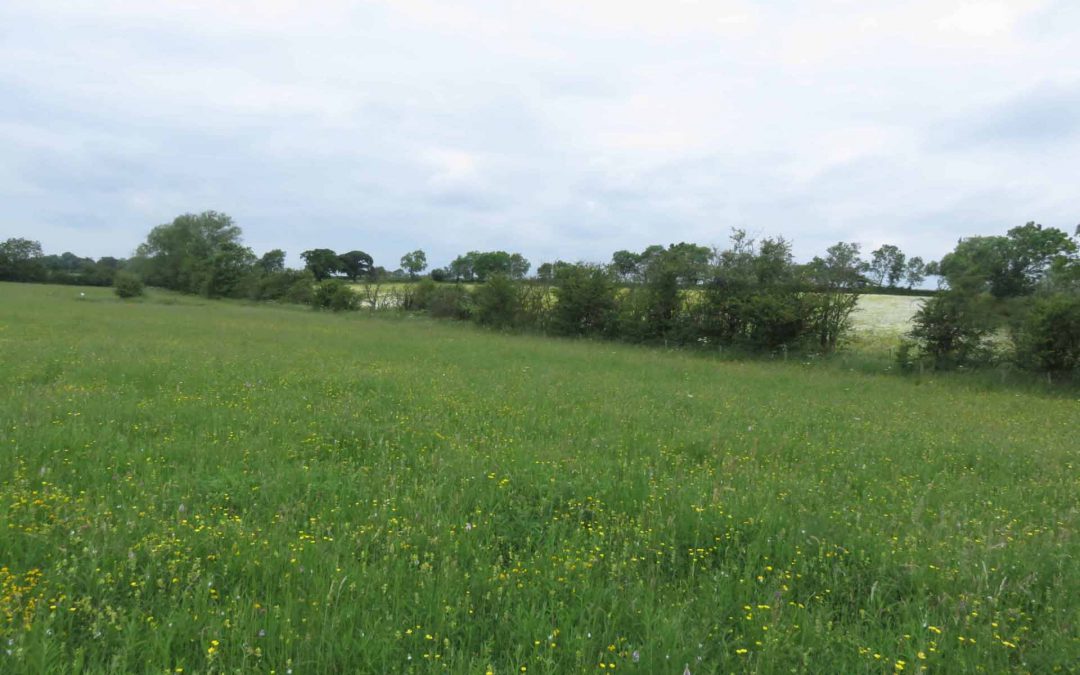RNHS visit report: Cribb’s Meadow, 20th May 2018
May is a lovely time to begin visiting our grassland nature reserves and this proved to be the case when 12 members of the Society went to Cribb’s Meadow Site of Special Scientific Interest (SSSI) and National Nature Reserve (NNR). The main focus of our visit was to see the green-winged orchids and other spring flowers. On arrival at the gate of North Meadow, the larger of the two fields,
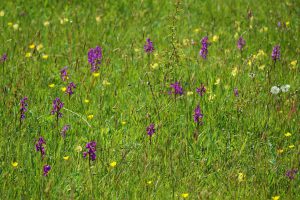
I was initially shocked to see no sign of the orchids but soon realised this was because the meadow grasses, encouraged by the recent warm weather, had put on a sudden surge of growth and it was not long before we found our first green-winged orchids, then several ‘swarms’ of them.
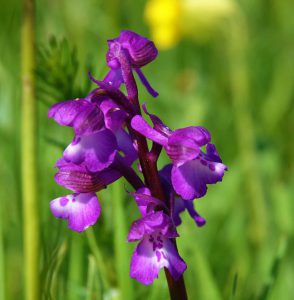
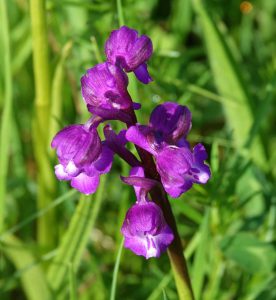
It is a feature of how these orchids grow in dense groups, no doubt influenced by small differences in soil moisture, nutrients and beneficial fungi. A single pink variant was found which, I am told, have a noticeably stronger fragrance than the darker purple flower-heads. Many of the wildflowers growing at Cribb’s Meadow are only found in ancient grasslands that have not been ploughed or fertilized in recent times; these include the strange little fern adders-tongue, and bulbous buttercup, with its uniquely reflexed sepals, setting it apart from the commoner meadow buttercup, which we also saw in profusion.
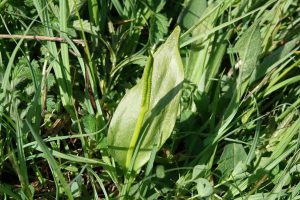
Pignut was just starting to flower, but we were too early to see the black chimney sweeper moths whose caterpillars feed on this dainty relative of cow parsley. Other typical plants of ancient lowland hay meadows were common bird’s-foot-trefoil, great burnet, yellow vetchling, lady’s bedstraw and common sorrel, although only the latter was in flower. The leaves of common spotted-orchids were mostly well-hidden in the grass and will not be flowering for a few weeks yet but an eagle-eyed person spotted a tway-blade orchid whose tiny green florets had just begun to open.
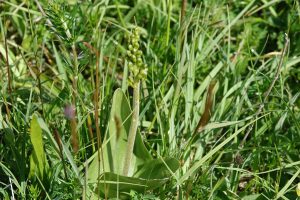
Water avens and cuckooflower, both of which nearly died out in the dry winters of the early 1990s, was in flower too.
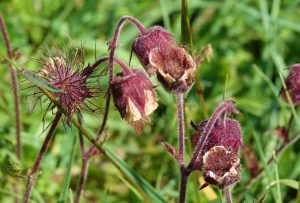
At the ponds in both North and the smaller South Meadow, azure and large red damselflies were on the wing and a powder-blue male broad-bodied chaser dragonfly was busy living up to the name. A yellow-brown female chaser was also seen. In the well-grown hedgerows we could hear blackcaps, chaffinches and several willow warblers.
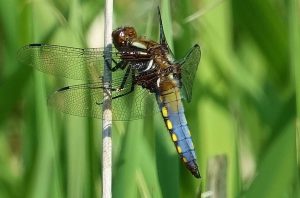
The nature reserve is owned by Leicestershire and Rutland Wildlife Trust, who manage the fields for the meadow community of plants and insects by grazing with cattle and sheep at various times of year, with occasional hay cuts. On Monday 21st May, I helped with the annual count of green-winged orchids: the total count was more than 1600 flowering spikes, compared with 962 in May 2017, so the management is obviously working.
Jenny Harris
Many thanks to Ann Tomlinson for the excellent photographs to go with this report
